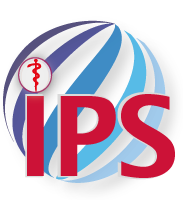
As a developer or vendor of health information technologies, having standards for healthcare information is essential to developing efficient and scalable software. The International Patient Summary (IPS) provides a baseline for data expectations across a wide range of nations. Being globally focused, the IPS provides vendors and implementers a cost-effective pathway to meet multiple clinical use cases. The IPS has been collaboratively developed across multiple standards development organizations (i.e. CEN, HL7, IHE, ISO, and SNOMED) and is being actively supported by international initiatives such as the Global Digital Health Partnership (GDHP), the G7, the G20 and World Health Organization (WHO).
Implementing the IPS effectively with software can be accelerated by appreciating how the standard is made available and tested across various jurisdictions. These considerations include:
- Understanding the parts of the IPS: A patient summary will be required to include patient demographic information along with data on the patient’s allergies, problems and medications. Other clinical domains are recommended or optional within the IPS to build out a summary that is specialty-agnostic and condition-independent but readily usable by clinicians for unscheduled, cross-border patient care (the borders to be crossed may be intra-national as well as international).
- Understanding the role of terminology: Different parts of the world will locally encode medical data differently, but the IPS establishes guidelines for how common terminologies can make this data usable across borders. This includes codes from SNOMED CT® across a variety of clinical domains as well as codes from other standard terminologies included as part of the HL7 implementation guides and IHE profiles. Using SNOMED CT and other standard terminologies helps make this information computable across a wide range of languages and source systems.
- Understanding IPS machine-readable formats: The IPS can be expressed as either an HL7 CDAor HL7 FHIR clinical document, and may additionally conform to and be tested with the IHE IPS profile for both the CDA and FHIR document formats. These documents are made up of reusable components (i.e. building blocks) that represent the granular medical data (e.g. a specific allergy, medication or problem), as well as narrative sections that present this information as a human readable summary. The format of this data can be expressed using two common standard internet data formats, eXtensible Markup Language (XML) and JavaScript Object Notation (JSON).
- Understand how the IPS can be tested: IHE, HL7 and GDHP have offered multiple Connectathons and Projectathons for vendors and implementers to learn about and validate IPS implementations. IHE also offers the IPS profile
sand guidance on how the IPS can be transmitted within and across institutions and systems.
A few resources for Health IT Developers to get acquainted with the IPS would be:
- The “5 minutes of Interop” introduction video to the IPS
- The IPS Implementation Guidance overview page
- The IPS Viewer, which shows how a JSON IPS instance leads to a snapshot of the most pertinent patient health information
- The ips.health HAPI Server, which shows an example server setup to generate IPS patient summaries
Interested vendors and implementers are also encouraged to join one or more of the offered IHE and HL7 events where the IPS is actively tested.
Photo by Ilya Pavlov
